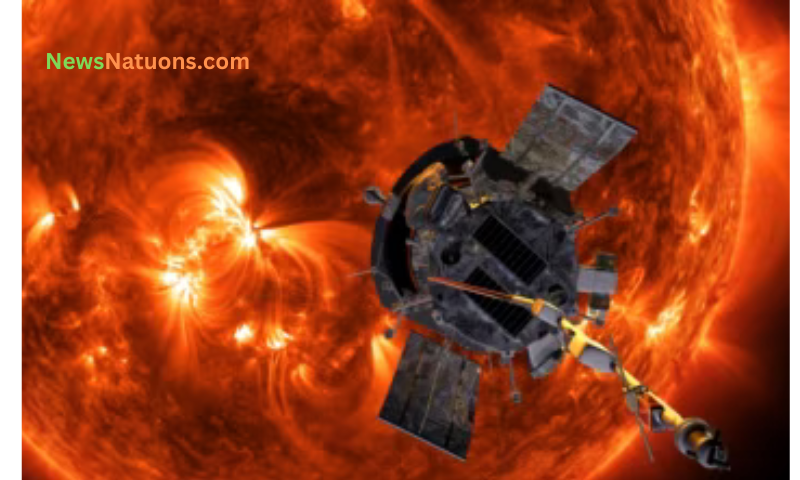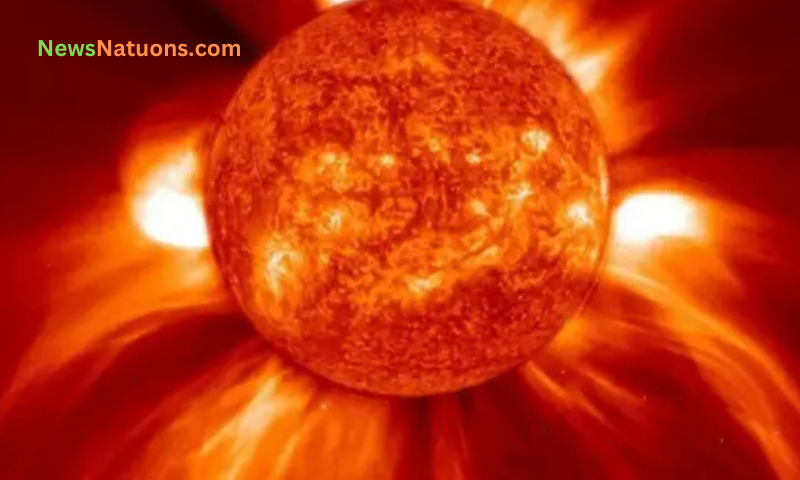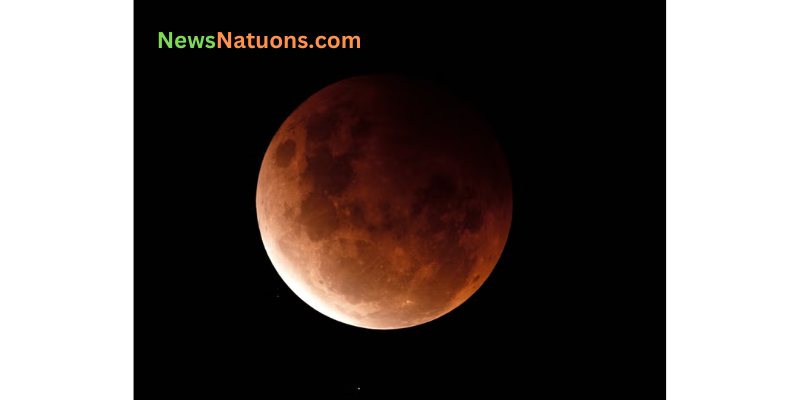Astronomers and space weather experts have issued a serious warning about upcoming solar activity that could impact Earth. According to recent updates, the active region of the Sun has turned to face our planet, bringing with it the potential for severe space weather events. These include solar flares and geomagnetic storms that can disrupt Earth’s technological infrastructure.
NASA’s Solar Dynamics Observatory (SDO) has captured detailed images of one of the most intense solar flares of 2025. This flare has been classified as an X2.7-class flare, which is among the most powerful categories of solar emissions. The intensity of this flare indicates that we may experience more disturbances in the coming days and weeks, depending on how solar activity unfolds.
What Are Solar Flares and Why Are They Dangerous?
Solar flares are sudden, intense bursts of radiation originating from the Sun’s surface, particularly from areas with strong magnetic activity known as sunspots. When these magnetic fields realign and snap, they release a tremendous amount of energy, which travels toward Earth at incredible speeds. The most powerful flares are classified into classes — A, B, C, M, and X — with X being the most intense.
The recent X2.7-class flare is a signal that the Sun is currently very active. Such flares can affect the Earth’s upper atmosphere, causing disruptions in radio communications and navigation systems. In fact, NASA and the National Oceanic and Atmospheric Administration (NOAA) confirmed that this particular solar flare caused a temporary radio blackout over the Middle East, lasting about 10 minutes.
The Impact on Earth: Radio Blackouts and More
The electromagnetic radiation from solar flares can interfere with high-frequency (HF) radio communications, which are crucial for aviation, maritime, and emergency services. The blackout that occurred in the Middle East serves as a warning of what might be expected globally if similar or more powerful flares continue to emerge.
In addition to communication disruptions, solar flares can have significant effects on power grids. During geomagnetic storms triggered by solar flares, surges of electrical current can travel through power lines, potentially damaging transformers and causing widespread outages. NASA warns that these flares can also interfere with GPS systems, making navigation less reliable for airlines, ships, and even mobile phones.
A Risk to Astronauts and Spacecraft
Beyond Earth, solar flares present a real danger to astronauts and satellites. High-energy particles from solar storms can damage spacecraft electronics, disrupt onboard communication systems, and pose serious health risks to astronauts. This is why space agencies closely monitor solar activity, issuing alerts when solar flares are expected.
For astronauts aboard the International Space Station (ISS), increased radiation levels during solar storms require immediate action. They may be instructed to move to more shielded areas of the station or suspend certain activities until the threat passes. For satellites, operators may shut down non-essential systems to prevent damage from radiation.
What Does This Mean for the Coming Weeks?
As the Sun continues to rotate and its active regions remain visible from Earth, there’s a possibility that more flares may occur. Each flare carries its own risk depending on its intensity, direction, and the Earth’s magnetic field conditions at the time of impact.
NASA and NOAA will continue to monitor the Sun’s activity closely. Both agencies have warned that the impact of such flares could increase over the next few weeks. People who rely on sensitive technologies — such as pilots, communication specialists, and those managing power grids — should remain vigilant and prepared for possible disruptions.
Although most people won’t notice major effects in their daily lives, the potential for issues like slower internet, GPS errors, or power outages can’t be ruled out. In rare cases, auroras may also be visible in regions where they normally aren’t seen, providing a beautiful — though potentially dangerous — display of solar power.
Solar Cycles and Future Outlook
The Sun operates on an 11-year cycle known as the solar cycle, during which solar activity increases and decreases. We are currently approaching the peak of Solar Cycle 25, which means more solar flares and geomagnetic storms are expected over the next year or two. This cycle is being monitored more closely than ever due to our increased reliance on technology.
Understanding these solar cycles helps scientists predict periods of high solar activity. With each cycle, we improve our ability to protect satellites, astronauts, and ground-based technologies from solar threats. But the unpredictability of solar flares remains a challenge.
Conclusion
NASA’s latest alert about the recent X2.7-class solar flare is a reminder that space weather is not just a theoretical concern — it has real and immediate consequences on our technology and safety. From radio blackouts to threats to astronauts, the Sun’s activity can impact life on Earth in profound ways. As solar activity continues to intensify, staying informed and prepared is more important than ever
ماہرینِ فلکیات نے آئندہ دنوں میں سورج کی بڑھتی ہوئی سرگرمیوں کے بارے میں سخت خبردار کیا ہے۔ اطلاعات کے مطابق سورج کا ایک فعال حصہ زمین کے سامنے آ چکا ہے، جو زمین کے لیے شدید خلائی موسمی خطرات کا باعث بن سکتا ہے۔ ان خطرات میں شمسی لپٹیں اور جیومیگنیٹک طوفان شامل ہیں، جو ہماری ٹیکنالوجی کو متاثر کر سکتے ہیں۔
ناسا کی سولر ڈائنامکس آبزرویٹری نے 2025 کی اب تک کی سب سے طاقتور شمسی لپٹ کی تصاویر حاصل کی ہیں۔ یہ شمسی اخراج X2.7 درجہ کا ہے، جو کہ شمسی اخراج کے خطرناک ترین درجوں میں شامل ہے۔ ماہرین کا کہنا ہے کہ اس شدت کی وجہ سے آئندہ دنوں اور ہفتوں میں مزید خلائی موسمی خطرات ممکن ہیں۔
شمسی لپٹیں کیا ہوتی ہیں اور یہ کتنی خطرناک ہو سکتی ہیں؟
شمسی لپٹیں سورج کی سطح سے اچانک اور شدید توانائی کے اخراج کو کہا جاتا ہے، جو زیادہ تر سورج کے ان حصوں سے نکلتی ہیں جہاں مقناطیسی سرگرمیاں زیادہ ہوتی ہیں۔ جب یہ مقناطیسی قوتیں ٹوٹتی یا دوبارہ جڑتی ہیں تو زبردست توانائی خارج ہوتی ہے، جو زمین کی طرف بڑی رفتار سے سفر کرتی ہے۔
ایکس درجہ کی شمسی لپٹیں سب سے زیادہ طاقتور سمجھی جاتی ہیں، اور X2.7 درجہ اس بات کا اشارہ ہے کہ سورج اس وقت بہت سرگرم ہے۔ یہ شمسی توانائی زمین کے بالائی کرۂ ہوا کو متاثر کرتی ہے اور ریڈیو کمیونیکیشن اور نیویگیشن سسٹمز میں خلل ڈال سکتی ہے۔
زمین پر اثرات: ریڈیو بلیک آؤٹ اور دیگر خدشات
شمسی لپٹوں سے خارج ہونے والی برقناطیسی شعاعیں زمین پر موجود ہائی فریکوئنسی ریڈیو سگنلز میں خلل ڈال سکتی ہیں، جو ہوابازی، بحری سفر اور ایمرجنسی سروسز کے لیے نہایت اہم ہوتے ہیں۔ مشرقِ وسطیٰ میں پیش آنے والا ریڈیو بلیک آؤٹ اس بات کی مثال ہے کہ دنیا کے دوسرے حصوں میں بھی ایسے خطرات پیدا ہو سکتے ہیں۔
اس کے علاوہ، شمسی طوفانوں کی وجہ سے بجلی کے نظام پر بھی اثر پڑ سکتا ہے۔ ان طوفانوں سے پیدا ہونے والی کرنٹ پاور لائنز سے گزر کر ٹرانسفارمرز کو نقصان پہنچا سکتی ہے، جس سے وسیع پیمانے پر بجلی بند ہو سکتی ہے۔ ناسا کے مطابق شمسی لپٹیں GPS نظاموں کو بھی متاثر کر سکتی ہیں، جس سے نیویگیشن میں مشکلات پیدا ہو سکتی ہیں۔
خلا بازوں اور خلائی جہازوں کے لیے خطرہ

زمین سے باہر خلا میں موجود خلاباز اور سیٹلائٹس کے لیے شمسی لپٹیں خطرناک ثابت ہو سکتی ہیں۔ ان سے نکلنے والی طاقتور شعاعیں سیٹلائٹس کے برقی نظام کو متاثر کر سکتی ہیں اور خلابازوں کی صحت کے لیے خطرہ بن سکتی ہیں۔ اس لیے خلائی ایجنسیاں سورج کی سرگرمیوں پر مسلسل نظر رکھتی ہیں۔
بین الاقوامی خلائی اسٹیشن میں موجود خلابازوں کو ایسے مواقع پر زیادہ محفوظ علاقوں میں منتقل کیا جاتا ہے، اور بعض اوقات ان کی سرگرمیاں معطل کر دی جاتی ہیں۔ سیٹلائٹس کے آپریٹرز بھی اکثر حفاظتی تدابیر کے تحت ان کے غیر ضروری نظام بند کر دیتے ہیں۔
آئندہ دنوں میں کیا ہو سکتا ہے؟
جب تک سورج کا سرگرم حصہ زمین کے سامنے موجود رہے گا، مزید شمسی لپٹیں متوقع ہیں۔ ہر نئی لپٹ کے اثرات اس کی شدت، سمت اور زمین کے مقناطیسی حالات پر منحصر ہوتے ہیں۔
ناسا اور NOAA آنے والے دنوں میں سورج کی سرگرمیوں پر گہری نظر رکھیں گے۔ ان اداروں نے ٹیکنالوجی پر انحصار کرنے والوں کو محتاط رہنے کا مشورہ دیا ہے، خاص طور پر پائلٹس، نیویگیشن ماہرین اور بجلی کے نظام سے جڑے افراد کو۔
عام افراد شاید اس کے فوری اثرات محسوس نہ کریں، مگر سست انٹرنیٹ، GPS کی غلطیاں یا بجلی بند ہونے جیسے مسائل ہو سکتے ہیں۔ کچھ علاقوں میں شمالی روشنیاں (auroras) بھی نظر آ سکتی ہیں، جو خوبصورت تو ہیں مگر ایک بڑے خطرے کی علامت بھی۔
شمسی سائیکل اور مستقبل کی پیشگوئی
سورج 11 سالہ سائیکل پر کام کرتا ہے، جسے سولر سائیکل کہا جاتا ہے۔ اس دوران سورج کی سرگرمیاں بڑھتی اور کم ہوتی رہتی ہیں۔ ہم اس وقت سولر سائیکل 25 کے عروج کی طرف بڑھ رہے ہیں، جس کا مطلب ہے کہ آئندہ ایک دو سالوں میں مزید شمسی طوفان متوقع ہیں۔
سائنسدان اس سائیکل کو سمجھ کر سیٹلائٹس، خلابازوں اور زمینی ٹیکنالوجی کی حفاظت کے لیے اقدامات کرتے ہیں۔ مگر شمسی لپٹوں کی پیشگوئی کرنا اب بھی ایک مشکل کام ہے۔
نتیجہ
ناسا کی جانب سے جاری کردہ حالیہ وارننگ اس بات کی یاددہانی ہے کہ خلائی موسم حقیقت ہے اور اس کے زمین پر گہرے اثرات ہو سکتے ہیں۔ ریڈیو بلیک آؤٹ، پاور گرڈ پر اثرات، GPS میں خلل اور خلا بازوں کی سلامتی جیسے مسائل ہمیں خبردار کرتے ہیں کہ ہمیں ہمیشہ تیار رہنا چاہیے۔ جیسے جیسے سورج کی سرگرمیاں بڑھتی جا رہی ہیں، ہمارے لیے مستعدی اور معلوماتی رہنا پہلے سے کہیں زیادہ ضروری ہو چکا ہے۔











